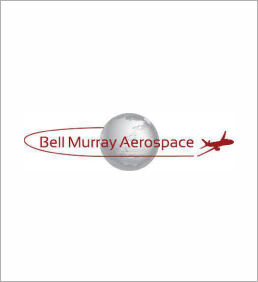
Top Challenges Military Pilots Face When Moving to Civilian Aviation and How to Overcome Them
Introduction
Transitioning from a military pilot to a civilian airline career is a significant change that presents a unique set of challenges. While military pilots bring a wealth of experience, discipline, and a strong skill set, the shift to commercial aviation comes with hurdles that require careful navigation. This blog will explore the top challenges military pilots face when moving to civilian aviation and offer solutions and tips for overcoming them.
1. Certification and Licensing
Challenge:
Military pilots are highly trained and experienced, but their military certifications don’t directly translate to civilian pilot licenses. To fly commercially, they must obtain Federal Aviation Administration (FAA) certifications, which can be a time-consuming and costly process.
Solution:
Military pilots should begin the process of converting their military qualifications to civilian licenses as early as possible. The FAA offers the Military Competence Exam (MCE), which allows military pilots to apply for a commercial certificate based on their military experience. It’s essential to study the civilian airspace, procedures, and regulations, which differ from military operations.
Tips:
Enroll in Part 61 or Part 141 flight school to gain knowledge on FAA procedures.
Take advantage of the GI Bill, which can cover the costs of additional training and exams.
Network with other military pilots who have successfully made the transition to get insights and advice.
2. Cultural Adjustment
Challenge:
The military operates with a unique culture, hierarchy, and communication style, which can be vastly different from the civilian sector. Adjusting to the more relaxed and less regimented environment of commercial aviation can be difficult for some former military pilots.
Solution:
Understanding the cultural differences and adapting to them is key. This includes learning the softer communication styles typically used in civilian aviation, where the emphasis is on collaboration and passenger service rather than mission execution.
Tips:
Engage in civilian pilot forums and networks to become familiar with the industry’s culture.
Consider taking a course in human factors and Crew Resource Management (CRM), which are crucial in the commercial sector.
Practice active listening and adapt your communication style to be more collaborative.
3. Job Search and Networking
Challenge:
Finding a job in the civilian aviation sector can be daunting, especially for those who have spent their careers in the military. The job search process requires a different set of skills, including resume writing, interviewing, and networking, which might be unfamiliar to military pilots.
Solution:
Begin the job search process early, leveraging both military and civilian networks. Creating a civilian-style resume that highlights transferable skills, such as leadership, decision-making, and technical expertise, is essential. Networking is crucial, as many jobs in the aviation industry are filled through referrals.
Tips:
Attend aviation job fairs, both in-person and virtually, to connect with potential employers.
Use LinkedIn to build a professional profile and connect with industry leaders.
Join aviation organizations, such as the Aircraft Owners and Pilots Association (AOPA) or the Experimental Aircraft Association (EAA), which offer networking opportunities and resources.
4. Adaptation to Civilian Aircraft and Operations
Challenge:
Military aircraft and operations are designed for different purposes than civilian aviation. Adapting to the different systems, procedures, and operational philosophies of commercial aircraft can be challenging.
Solution:
Invest time in learning the specifics of civilian aircraft, especially the differences in avionics, navigation, and communication systems. Consider gaining experience in simulators or smaller aircraft before transitioning to larger commercial jets.
Tips:
Consider taking additional training courses for the type of aircraft you’ll fly in the civilian sector. Work closely with experienced civilian pilots to learn best practices and stay updated with industry standards. YouTube is a great resource for tutorials and career-specific content, helping you remain current in civilian aviation.
5. Work-Life Balance
Challenge:
Military life often involves long deployments and time away from family, and while commercial aviation can also be demanding, it offers a different kind of work-life balance. Adjusting to this new dynamic can be challenging for military pilots who are used to a more intense and structured environment.
Solution:
Approach the civilian pilot lifestyle with an open mind, understanding that while the intensity may be lower, the importance of maintaining a work-life balance is critical. Civilian aviation often allows for more predictable schedules, which can improve family time and personal well-being.
Tips:
Set clear boundaries between work and personal life to avoid burnout.
Use the increased downtime to pursue hobbies or continue education.
Communicate with your employer about schedule preferences whenever possible.
Conclusion
The transition from military to civilian aviation presents several challenges, but with proper preparation and a proactive approach, these obstacles can be overcome. By focusing on obtaining the necessary certifications, adapting to the civilian culture, leveraging networking opportunities, gaining familiarity with civilian aircraft, and achieving a healthy work-life balance, military pilots can successfully transition to a fulfilling career in commercial aviation. The journey may be challenging, but the rewards of continuing to fly in a new capacity are well worth the effort.
© 2024.Anywhereatp, LLC all rights reserved
Number of seats
Category ATP CTP




